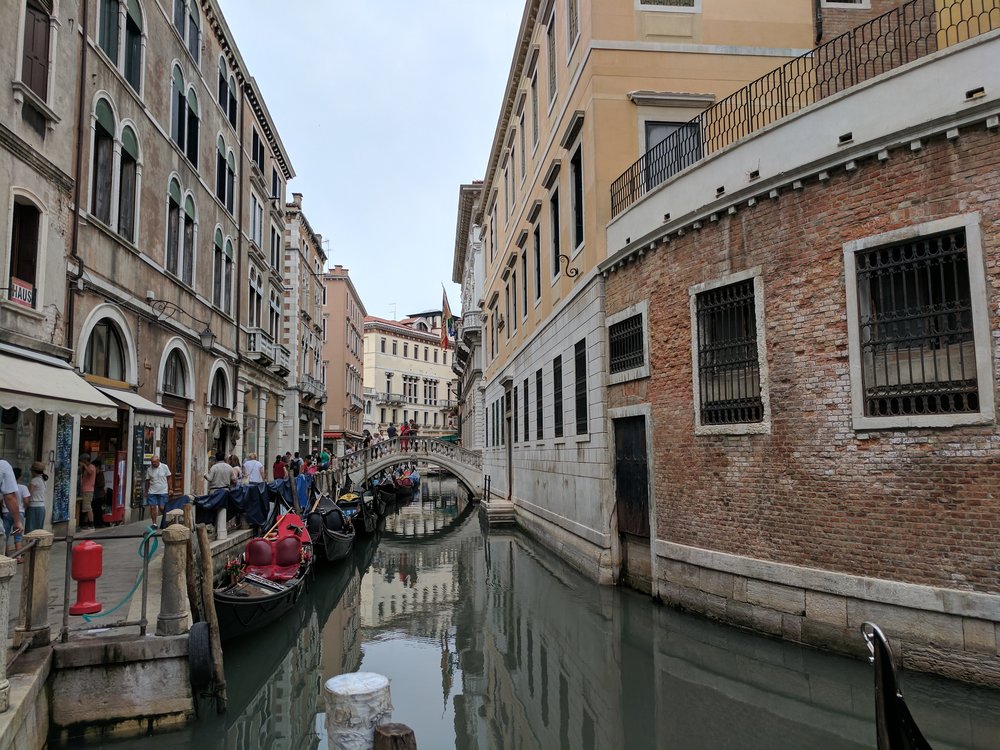Common Place in Chaos
November 22, 2017
by Jane Griffo
The Venice Biennale 2017 Viva Arte Viva, seems to be talking about human existence in a chaotic world. Our planet is a place full of conflicts and contradictions. These conflicts are frequently created by human emotions and the speed of technology, more than by natural disasters itself. The complexity of our inner human nature, the good and the bad side of our psychic, conflicts with the environment of the outside world.

People walking along one of Venice's many canals Photo Credit: Jonathan MorganPeople walking along one of Venice's many canals Photo Credit: Jonathan MorganIndividuals are trying to find balance between their subjective ways to interpret the world around them and, at the same time, relate to others who are also lost in the chaos. In the complexity of being, we try dialogues to understand each other within a space. The Venice Biennale is a journey to question the humanity in each one of us. The battles between goodness and madness inside us is a way to search the equilibrium towards consciousness. Franco “Bifo” Berardi in one of his lectures in Spannocchia talked about being friends with chaos in order to find creative balance, and also in his book After the Future he explains:
Chaos is too complex an environment to be decoded by the available explanatory grids, it is an environment in which semiotic and emotional flows are circulating too fast for our minds to elaborate.
The elaboration of chaos is made possible by the emergence of a semiogenetic machine that Guattari calls a refrain. This is chaosmosis, the emergence of a form: creative morphogenesis.
The morphogenetic process has long been described in deterministic terms by modern epistemology: Newton and Galileo founded physics on the idea that a unifying language –the language of mathematics—frames the whole creation.
Martin Cordiano, an Argentine artist living in London, explores in Common Place the paradox of multiple realities within spaces which Bifo calls chaosmosis, “the emergence of a form: creative morphogenesis.”

“Common Place” by Martin Cordiano, 2017 Photo Credit: Jonathan Morgan“Common Place” by Martin Cordiano, 2017 Photo Credit: Jonathan MorganCommon Place questions the paradoxes between space and time. The dynamic world into the “permanent” structures of landscapes. Influenced by architecture and sculpture, Cordiano uses materials such as wood to express rooms in a house. Each “box” narrates a story of relationships. The chalk balls contained in the wood structure, were inspired by cannon balls, which relates to people. The volume of the balls in relation to space is a poetic metaphor of our connection with people in the world. Cordiano’s Common Place is a visual-poetic representation of Bifo’s lectures in Spannocchia, when he talked about the semiotics of being human and our interpretation of reality.
